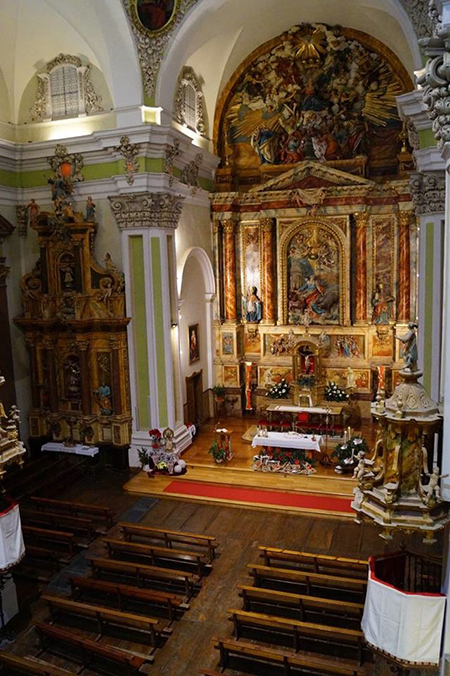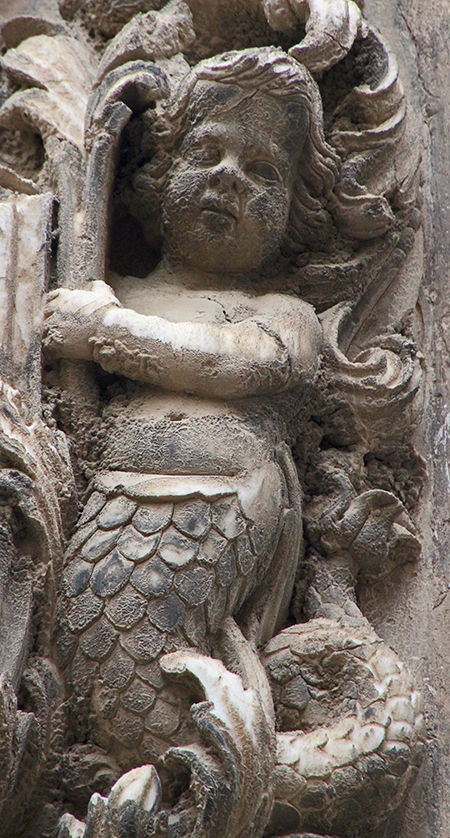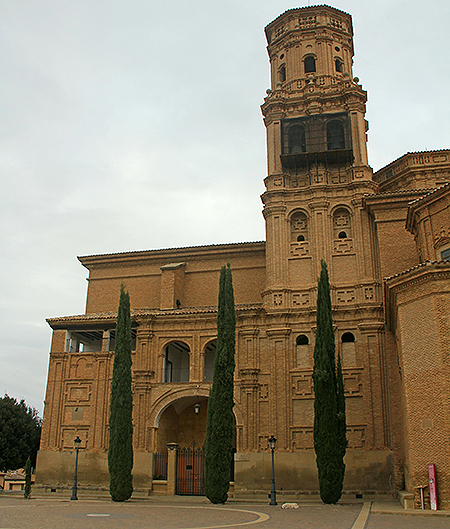4 October
Conferences
THE BAROQUE IN VILLAFRANCA
Art and artists in Baroque Villafranca
D. Carlos Carrasco Navarro
Ph.D. in Art History
Within the V Baroque conference of 2017, it was discussed the topic of the different stages of Baroque art, especially architecture and altarpieces; going from the first style to the Baroque plenary session of the Executive Council, and from the courtly Baroque to the classicist Baroque of the end of the century. This evolutionary analysis was intended to illustrate to the public attending the lecture on October 4, about the injustice and reductionist vision of encompassing all eighteenth-century art under the same heading, under the prejudice that it all suffers from variegation and grandiloquence.
At the same time as the issue of the subperiods, the concept of baroque, a phenomenon of back and forth by which, at the end of the seventeenth century, altarpieces and buildings that seemed too simple to contemporary eyes were decoratively reloaded. It is a process that is reversed in the late eighteenth century at the hands of the Academies that purify the excesses of the past. Villafranca has a magnificent example of this second phase in the remodeling of the Main Altarpiece of the Parish of Santa Eufemia.
The Navarre town of Villafranca, in the Merindad de la Ribera del Ebro, together with Tudela and Corella, is one of the main centers of the Baroque in Navarre; it is the southern area of the Old Kingdom that supplied artists (architects, altarpieces and painters) to the rest of the region during the XVII and XVIII centuries, being even called for the main artistic enterprises of Pamplona, such as the staircase of the Town Hall or the High Altarpiece of the Convent of Recoletas.
In the specific case of the southern town that occupies us, the splendor of the Baroque is given by the constructive impetus that gives as result the expansion of the Parish of Santa Eufemia, the construction of the Convent of Carmelites and the reform Basilica of Portal; also fruit of the population growth of the eighteenth century, that after the loss from 278 fires in 1581 to 141 in 1646, goes to 280 in 1677, 428 in 1725 and finally, 557 fires in the year 1800.
The 16th century structure of the basilica next to the East Gate of the wall is the first building to undergo the pertinent baroque style; in this case, in two phases. In 1611 Juan López de Arana was the master builder, while in 1690 it was the Olea brothers, Juan and Pedro, all three natives of the town.
However, the Convent of Carmen is an ex novo Baroque foundation, under the sponsorship in 1722 of Miguel de Arce and Teresa de Guirior, whose church was built between 1757 and 1762 under the hands of the master mason, José de Peñalba. The main altarpiece and collaterals were installed in 1769 under a rococo design C in the Court of Madrid, leaving its pine wood in sight without gilding and being the holders Santa Teresa next to San Angelo and San Juan de la Cruz.
However, it is the baroque style of the Templo Mayor de Santa Eufemia that best summarizes this phenomenon from the end of the XVII century to the end of the XVIII century. The 15th century parish church was clearly insufficient to accommodate all the faithful, so the process began with the enlargement of the bell tower and remodeling of the south façade. Wrapping the base of the previous tower, the new design of Pedro Aguirre, which had been chosen after a failed one of Santiago Raon himself, was begun.
The master's escape to Castile and in spite of his brief return, and precisely due to his early death, the master from Tudela, José Ezquerra y Ederra, together with José de Falces, a Capuchin friar from Peralta, was commissioned to finish the tower. Ezquerra is also the author of the towers of the Collegiate of Tudela and Peralta, that is why the three have a similar appearance; however, in the case of Villafranca and to adapt a last octagonal body on a rectangular pre-existing plant, presents from some perspectives a somewhat unique and unstable foreshortening, which is still an interesting visual game very typical of the baroque.
The next phase is the construction of the new Wayside Cross and chancel, including the Chapel of the Virgin of the Rosary on the Epistle side, supervised by Juan Antonio Marzal from Tudela and Fray Bernardo de San José. The first of them together with Fray José Alberto Pina, are also those who have to recompose the reform of the main nave, which in 1734 threatened ruin. The doorways, especially the one on the southern side, still remain from the Gothic period. Antonio and José del Río are the authors of the plasterwork that covers the interior of the building.
The Main Altarpiece and the two collateral ones, work in 1730 of the master of Caparroso Vicente Frías, suffered the inverse process of "de-baroque". This involution is typical of the new times dictated by the purism of the Royal Academy of Fine Arts, which came from the hand of the Italian master-architect Santiago Marsili.
Initially based in Guipúzcoa, Santiago Marsili specialized in solemnizing and shaving Baroque altarpieces plenary session of the Executive Council, converting them into neoclassical fantasies. After purifying the Baroque altarpiece of the Assumption of the Collegiate Church of Borja (Zaragoza) barely a century after its construction, he settled in Navarre, where in 1797, together with Juan Angós de Fitero and the Cascantino painter Diego Díaz del Valle, he carried out the reform of the altarpieces we are dealing with here, signature .
In this effort, the Solomonic columns are transformed into others with smooth shafts, and the interstices of the niches dedicated to Saint Peter and Saint Paul are covered by panels with sculptures of Saint Fermin and Saint Saturnino. The bench is filled with scenes of the martyrdom of Saint Eufemia next to the excellent tabernacle of the tabernacle, but the central scene of the altarpiece with a high relief of the apotheosis of the Patron Saint stands out especially.
The attic is completely transformed with an excellent representation of the Assumption of Mary that occupies the entire space up to the vault. Only the cartouche of the angels is slightly reminiscent of the previous baroque aesthetic, as well as the panels under the columns of the collateral altarpieces, which are surprisingly well preserved since they underwent a similar process to the central altarpiece.
All in all, one of the best sets of classicist baroque in Navarre is achieved, full of polychrome marbleized wood and apotheosic triumphs in relief, which culminate a process of baroque and de-baroque in barely a century; a fast and ephemeral process so typical of a singular and attractive artistic style in its excess.




